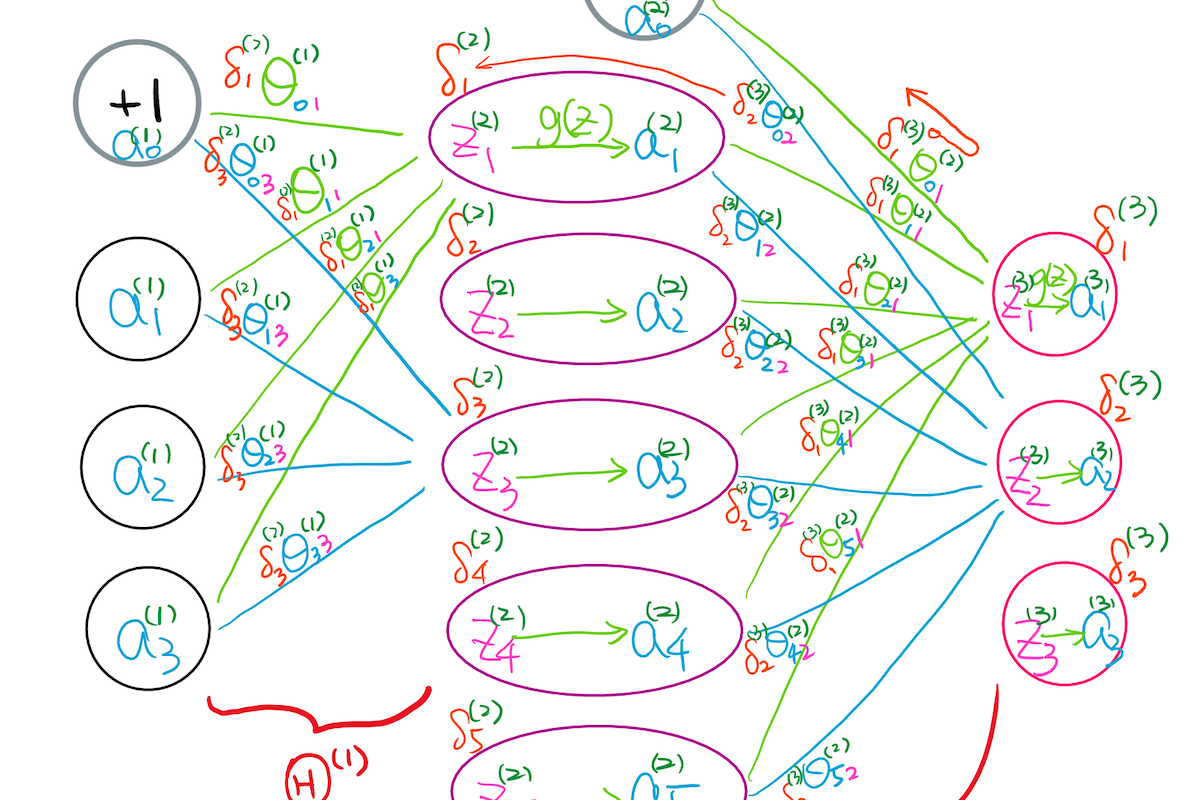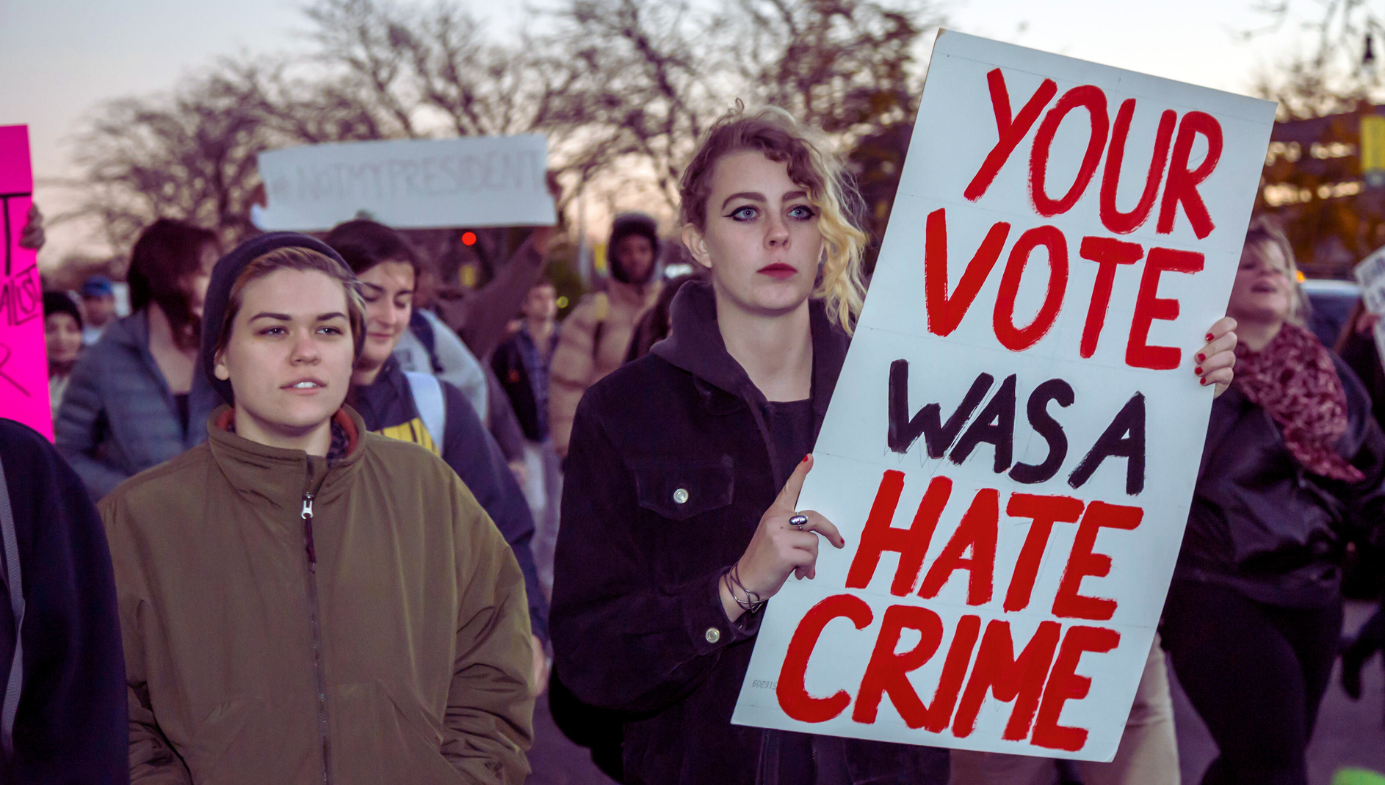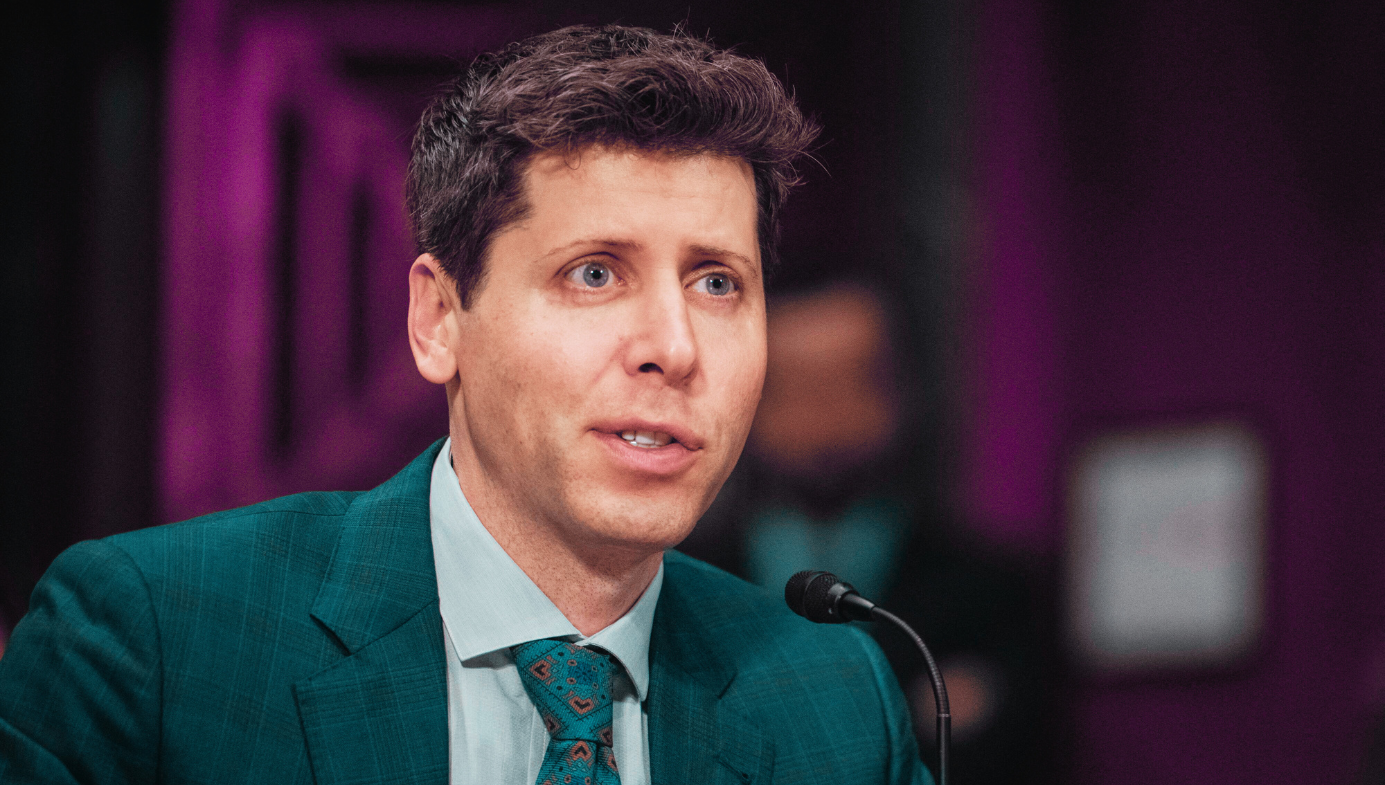AI Debate
Beating Back Cancel Culture: A Case Study from the Field of Artificial Intelligence
It’s easy to decry cancel culture, but hard to turn it back. Thankfully, recent developments in my area of academic specialty—artificial intelligence (AI)—show that fighting cancel culture isn’t impossible.

It’s easy to decry cancel culture, but hard to turn it back. Thankfully, recent developments in my area of academic specialty—artificial intelligence (AI)—show that fighting cancel culture isn’t impossible. And as I explain below, the lessons that members of the AI community have learned in this regard can be generalized to other professional subcultures.
To understand the flash point at issue, it’s necessary to delve briefly into how AI functions. In many cases, AI algorithms have partly replaced both formal and informal human decision-making systems that pick who gets hired or promoted within organizations. Financial institutions use AI to determine who gets a loan. And some police agencies use AI to anticipate which neighborhoods will be afflicted by crime. As such, there has been a great focus on ensuring that algorithms won’t replicate their coders’ implicit biases against, say, women or visible minorities. Citing evidence that, for instance, “commercial face recognition systems have much higher error rates for dark-skinned women while having minimal errors on light skinned men,” computer scientist Timnit Gebru, formerly the co-lead of Google’s ethical AI team, has argued that AI systems are contaminated by the biases of the mostly white male programmers that created them. In a paper authored with colleagues at Google and my university, she warned that large language-based AI systems in particular encourage a “hegemonic worldview” that serves to perpetuate hate speech and bigotry.
These issues have also been taken up by the Conference on Neural Information Processing Systems (NeurIPS), the leading conference in the AI community. As of this writing, the NeurIPS home page is dominated by a statement attesting to the organizers’ commitment to “principles of ethics, fairness, and inclusivity.” This year, NeurIPS has started requiring paper authors to include a section describing the “broader impacts” on society that the underlying science might present, no matter how obscurely technical the underlying content. There is also an ethics board to evaluate whether any paper runs afoul of such concerns. “Regardless of scientific quality or contribution,” the organizers have announced, “a submission may be rejected for ethical considerations, including methods, applications, or data that create or reinforce unfair bias” (or, less controversially, “that have a primary purpose of harm or injury”).
In early December, I used social media to push back against this fairly obvious use of ideological litmus tests to limit what can and cannot get published. At first, I found plenty of support—as evidenced by the results of an (admittedly unscientific) Twitter survey. That was when a small mob of social-justice radicals—already well-known within the field—came after me, led by a California Institute of Technology academic who is also research director at a major tech company.
As so often happens in these confrontations, the discussion was derailed by hyperbolic accusations of racism. Naturally, the mob went after my university, and my own department distanced itself from my critique of the NeurIPS policy. In a matter of just a few days, submission protocols at an academic conference had attained the status of social-justice holy writ, with naysayers—myself foremost among them—denounced as heretics. The mob leader even wrote lengthy Twitter threads listing off the names of anyone who’d liked or retweeted my critiques of her position, suggesting they were all bigots.

But as the days passed, and it became clear who the real radicals were, something interesting happened. Many of the usually reticent moderates in our community began to speak up, and denounce the unhinged and ruthless tactics applied against me and my supporters. In the end, I suffered no professional consequences (at least not in any formal way). And the cancel crowd’s ringleader even issued a public apology and promised to mend her ways. She is no longer on Twitter, and we’re rid of the most vicious cancel-culture bully in the AI community. Topics that had been suppressed are now being freely discussed again in our forums. Dozens of computer-science faculty have even signed a letter to the Association for Computing Machinery (ACM), our professional society, calling for an end to “the increasing use of repressive actions aimed at limiting the free and unfettered conduct of scientific research and debate.”

It’s a tale that illustrates a number of useful principles for those seeking to combat cancel culture. These include:
Find your friends. There’s nothing worse than facing a mob alone. Build your network in advance, so that you don’t have to cold-call free-speech advocates when a crisis already is upon you. Create relationships with people in your workplace and field who share your views. Find out whether there are unions or other groups that are responsible for protecting your rights, and find out what they can do to help if a mob ever comes after you. Join and support organizations such as Heterodox Academy, the National Association of Scholars, and the Foundation for Individual Rights in Education (FIRE). Connect with like-minded people on social media. Your friends may come to your aid publicly or privately. Both are good. Even just receiving words of encouragement from like-minded individuals can make a big difference when you’re under attack.
Pick your battles. All workplaces and professional fields can present their share of dogmatists and unpleasant personalities. You can’t take on all of them, and not all battles are worth fighting. Pick the ones with high symbolic value—which is to say, battles that act as proxies for some larger principle—and which you think you have a reasonable chance of winning. In my case, I knew that taking on a notorious bully in the AI community was worth it because her rout would send a message to imitators. I also knew we had an advantage going in, because this individual already had hurt and angered many people. Moreover, her position as research director at a prominent company made her more vulnerable than me.
Know what to expect. The cancel crowd has its own bullet-point playbook. And they’ll respond aggressively to any symbolic act that threatens their status, or erodes the impression that they are the ones calling the shots. Remember that behind the social-justice veneer lies the brutal logic of power and ego. To maximize the pain you feel, they’ll tag activist groups on social media to inflate their numbers and reach. They’ll bombard every organization you’re part of with demands to censure, discipline, disown, fire, or expel you—often phrasing their appeals in the passive aggressive guise of “concern” and “disappointment.” At other times, they will insult, taunt, and, threaten you in a manner resembling middle-school children having a recess meltdown. In my case, the ringleader called me “a full on misogynist and racist,” “shameful bigot,” “hypocrite,” “clueless,” “tone-deaf,” “snowflake,” and “soulless troll.” She assailed my “privilege and patriarchy,” “lack of basic empathy and ethics,” and “zero self-awareness.” She also questioned whether I’m really a human, and called on NeurIPS to ban me, and for my department to expunge me. Her goal, in short, was to ruin my life. The cancelers will dig up anything they can from your past. And if they can’t find any, they’ll make it up. This will all seem terrifying, but much less so if you realize that you’re just the latest victim in what is basically a mechanical and dehumanizing process. Insofar as you don’t actually get fired from your job or suffer some other equivalent setback, these are all just words, and they don’t define who you are.
Don’t back down. Don’t apologize. Don’t make clarifications, and don’t try to appease the mob. All of these will only be taken as concessions, and embolden the mob to demand more. The real Achilles’s Heel of the cancel crowd is its short attention span. Once they bully someone into submission, they move on to the next victim. It’s a system designed for quick wins. If you don’t back down, they’ll raise the pitch as far as they can—but eventually they’ll be at a loss for what to do next, and all but the most fanatical will lose interest. The few that remain, now bereft of their backup, are just what you need to teach all of them a lesson, as we did in my case.

Don’t let them make it about you. You have the right to defend yourself when attacked, and it’s only natural to do so. Fight sanctions against you through the appropriate channels. But focusing your efforts on your own actions, even if they are the subject of spurious accusations, is generally a mistake. That’s because it changes the subject from the real underlying issues to your own supposed failings—and that’s what the cancel crowd wants, because it effectively forces you to fight for a draw instead of a win. The appropriate response to low attacks is to point out how low they are. For example, if someone threatens you with Title IX sex-discrimination proceedings on the basis of alleged “sexism”—as they did in my case—don’t bother dignifying this kind of ludicrous claim with a substantive rebuttal. Rather, just thank them for illustrating the misuse of Title IX to crush free speech, as I did.
Hold the moral high ground. Never descend to the level of insults, taunts, and ad hominem attacks, no matter how strong the temptation. Let the cancelers do it to their heart’s content, and the onlookers will judge accordingly. In my confrontation with the AI cancel crowd, I was particularly helped by the fact that several of the ringleaders are (or call themselves) professional AI ethicists. Some of them are even well-known within their field. When they serially engaged in childish and unethical behavior in full view of their colleagues, they did my job for me.
Mock them mercilessly. Fear is what keeps the silent majority from speaking up, and laughter is the best antidote. The cancelers take themselves extremely seriously, imagining themselves to be social-justice angels whose holy ends justify every imaginable means. Their sanctimonious spirit is a gift to you, if you call it out instead of playing along with its conceit.
Don’t let their narrative outrun yours. Once a false narrative is entrenched, it’s hard to overturn, no matter how many facts you have on your side. So while, as noted above, I generally would discourage you from focusing too much on defending your own actions, there should be some resource you can point to so that everyone can know the truth. Once you have established that resource—a blog post, a published article, a podcast, even a set of tweets or Facebook posts—point people to it where necessary, including your own professional contacts and potential allies. Keep it short, crisp, and compelling so that it gets widely circulated and isn’t thwarted by short attention spans. And keep the tone confident (and possibly even funny), so that it’s clear who the real inhuman fanatics are.
Goad them into overreaching. The cancelers’ overconfidence is your greatest asset, as I learned when the ringleader of the mob that came after me resorted to posting the above-referenced list of people whom she wanted canceled, many of them junior researchers whose only crime was to have followed me or liked one of my tweets. This crossed a line for a lot of observers, and of course the people on the list itself were aghast. Word spread of the shocking behavior. Even people on her side started turning against her.

Turn their weapons against them. You may find this to be the most controversial principle, but it’s also arguably the most crucial—as the cancelers won’t stop until they fear that they’ll endure the same consequences that they seek to impose on others. In my case, I watched as investors and customers leaned on the ringleader’s company to rein her in. Even companies that posture heavily in the area of social justice don’t actually want to be stained by the disgraceful behavior of mob leaders. Indeed, I have no doubt that it was an ultimatum from her employer that finally led the ringleader to stop her Twitter outbursts and apologize publicly to her victims, for all to see. Some will say that once we resort to this step, we become as bad as the cancelers. But that’s a false equivalence. The cancel crowd tries to ban people because of their views. We try to stop bullying—behavior that is reprehensible regardless of ideology.
Use the courts. The courts can be your friend when confrontations with the cancel crowd can’t be resolved through less formal and expensive means—for two reasons. One is that they invoke principles of due process, and look askance at show trials and kangaroo courts. They also tend to be less politically skewed than universities, tech firms, and human-resources departments. Even just the threat of a lawsuit can be enough to stop the cancelers. It worked for me when some of them crossed the line from insult to defamation. FIRE and other pro-free-speech organizations employ lawyers whose job is to fight on your behalf. Oh, and universities hate lawsuits. Whether you end up suing or not, moreover, always keep records on the assumption that you will need documents to prove your case. It’s easier to gather them at each step rather than after the fact.
Bring administrators around. Some administrators are themselves members of the cancel crowd, and will always be part of the problem until such time that they conclude that this attitude is no longer helpful to their own careers. But most are just decent people trying to do their job and find a path to safe harbor. And in this regard, it’s actually useful to them when they can see pressure coming from both sides, not just one. Despite being bombarded with demands, my department ultimately took no action against me (besides dissociating itself from my positions)—in part, I think, because I helped them see the situation clearly, including what was really at stake and how much the department had to lose by doing the wrong thing.

Don’t antagonize. Educate. Even many neutral onlookers who find cancel-culture tactics repellent dismiss the phenomenon as afflicting just a few privileged souls—acceptable collateral damage, as they see it, in the battle against patriarchy, white privilege, and so forth. (They’re just “false positives,” as one MIT professor put it when he attempted to dissuade people from signing our letter to ACM.) It’s easy to get angry at these naïve enablers of the mob, but it’s better to make them aware. Point them to resources such as The National Association of Scholars’ database of cancellations, the Canceled People website, or Quillette’s Panics and Persecutions. Give them examples of cancellations of journalists, tech workers, and even high-school students. Patiently explain what they’re missing (as I did in my response to the above-referenced MIT professor).
Get the majority on your side. In the end, most cancelers can’t be dissuaded in the short run: They’ve invested too much in their roles as inquisitors to give them up easily. The goal isn’t to win them over—you won’t—but rather to persuade the much larger number of people in the middle. Just because these people aren’t vocal doesn’t mean they aren’t out there watching, reading, thinking.
Perhaps most importantly, remember that most cancellation attempts end in failure. It’s hard to know that, however, because we seldom hear about the mobbings that fizzle out. Instead, the mob relies on its high-status wins to keep everyone in line. They enjoy the illusion that their movement is unstoppable, when in fact it becomes a subject of mockery as soon as a critical mass of people raise their voices against it.
And so even if you’re never targeted by the mob, play your part in opposing its attacks. As Solzhenitsyn famously put it, one man who tells the truth can bring down a tyranny. Together, we can bring down cancel culture.






